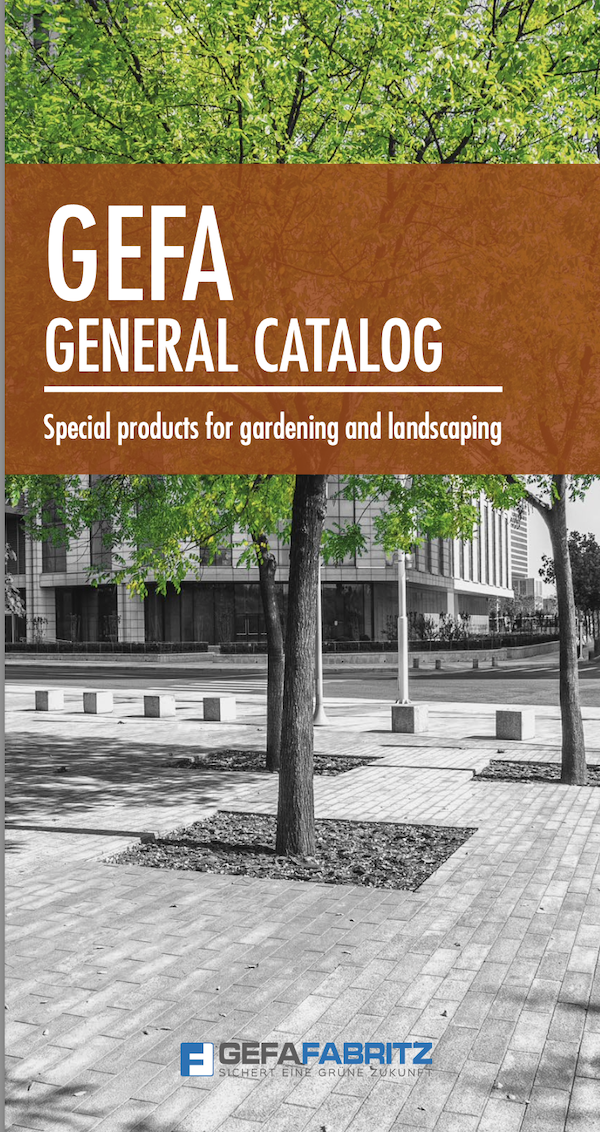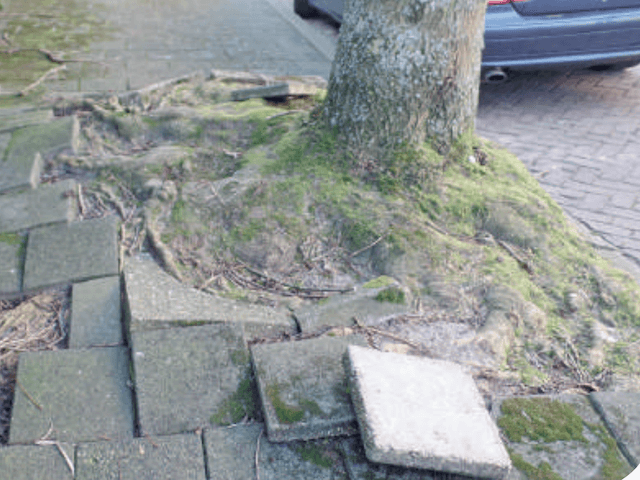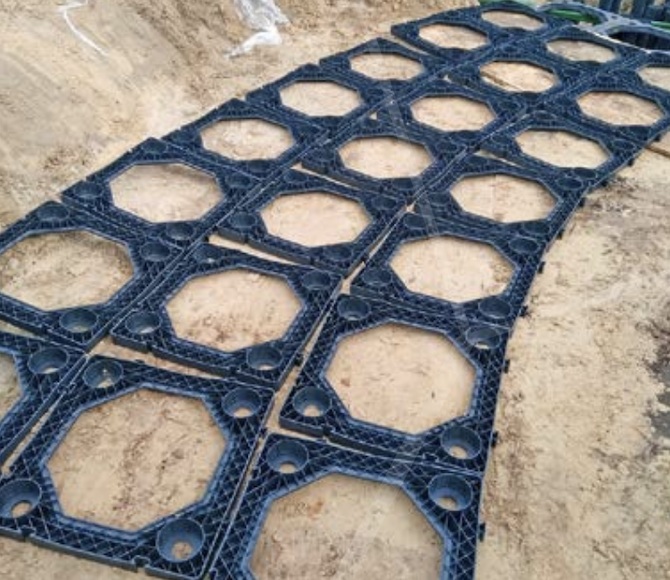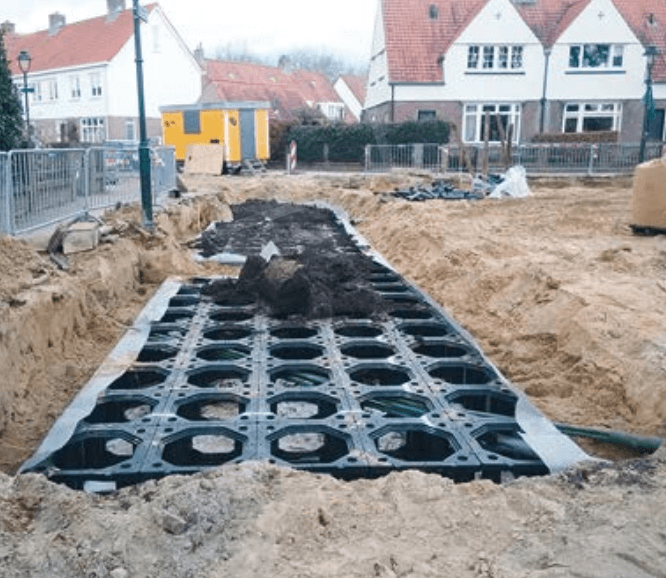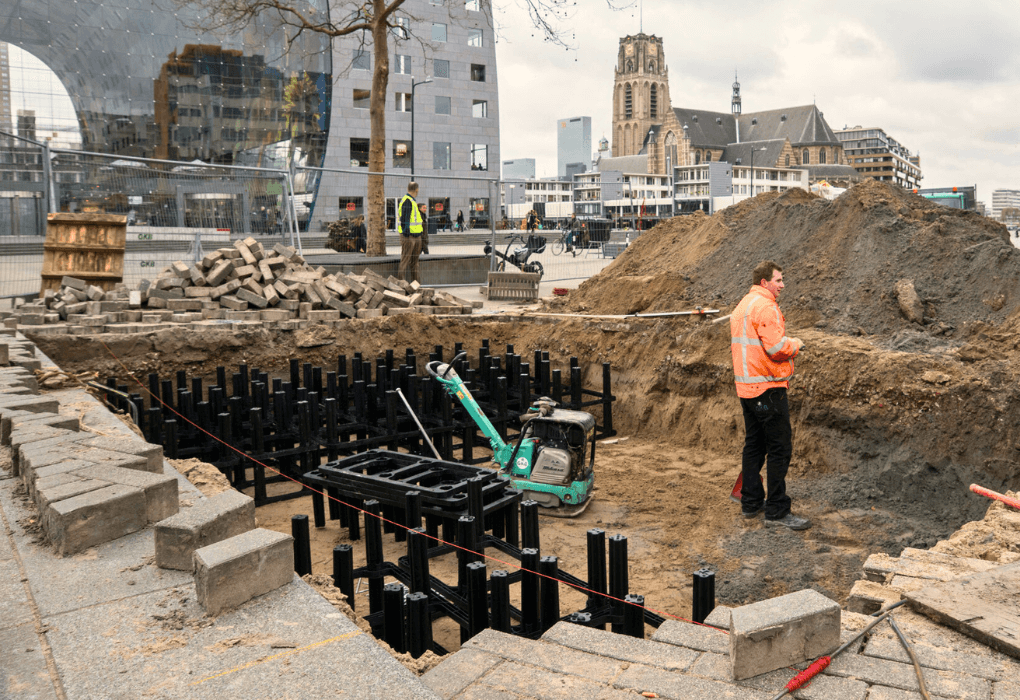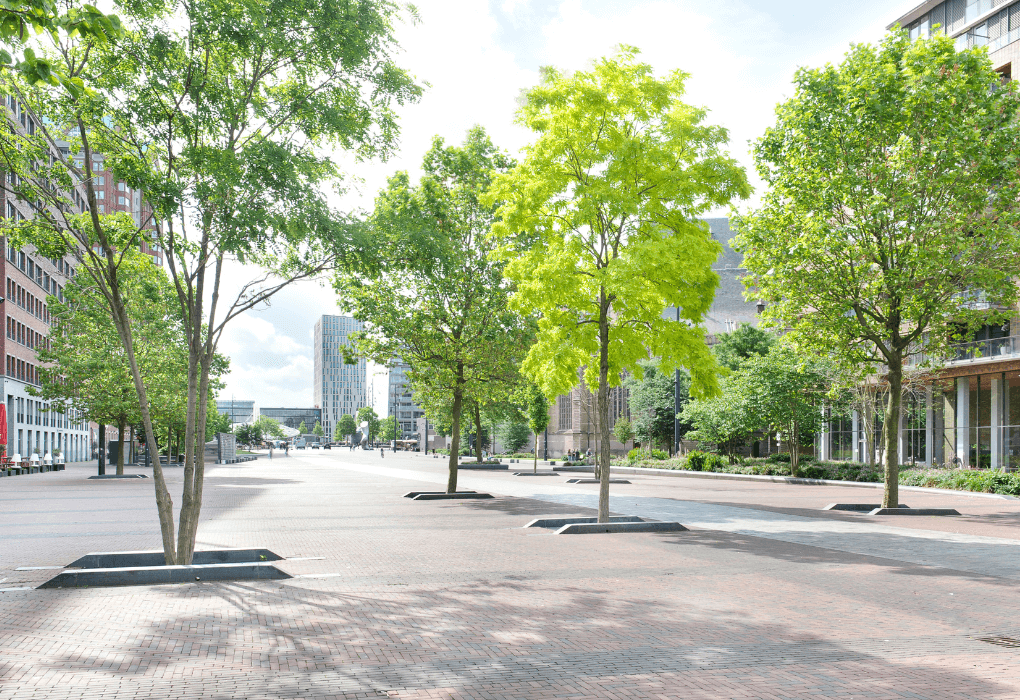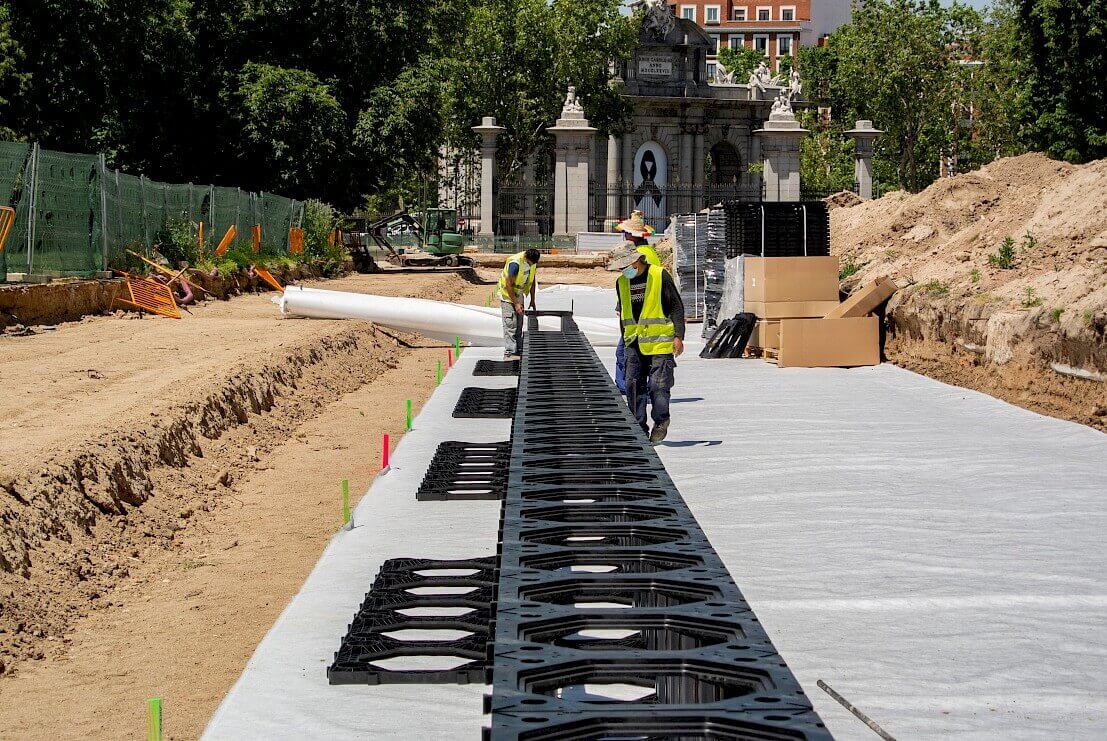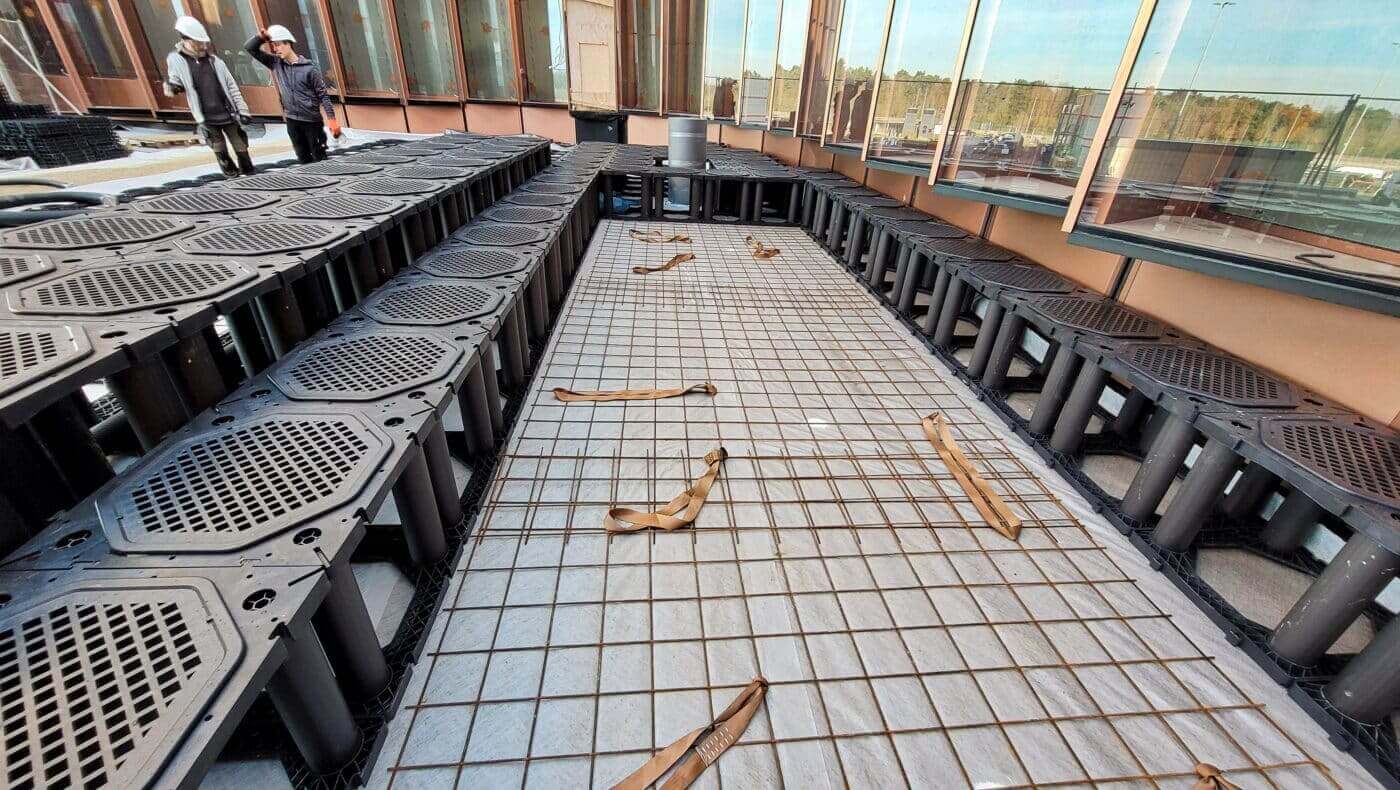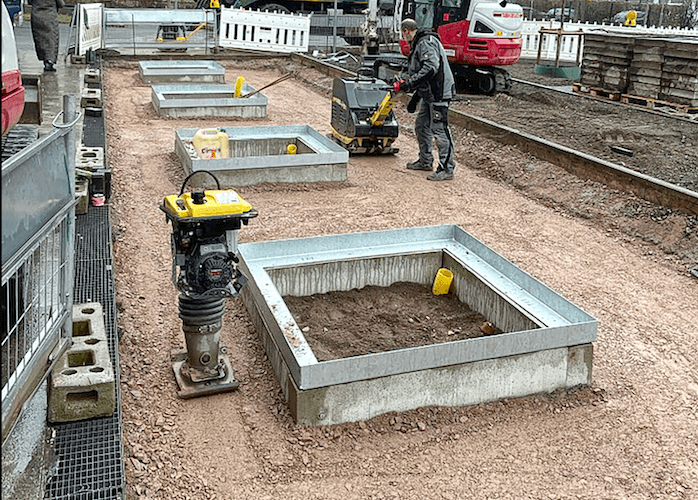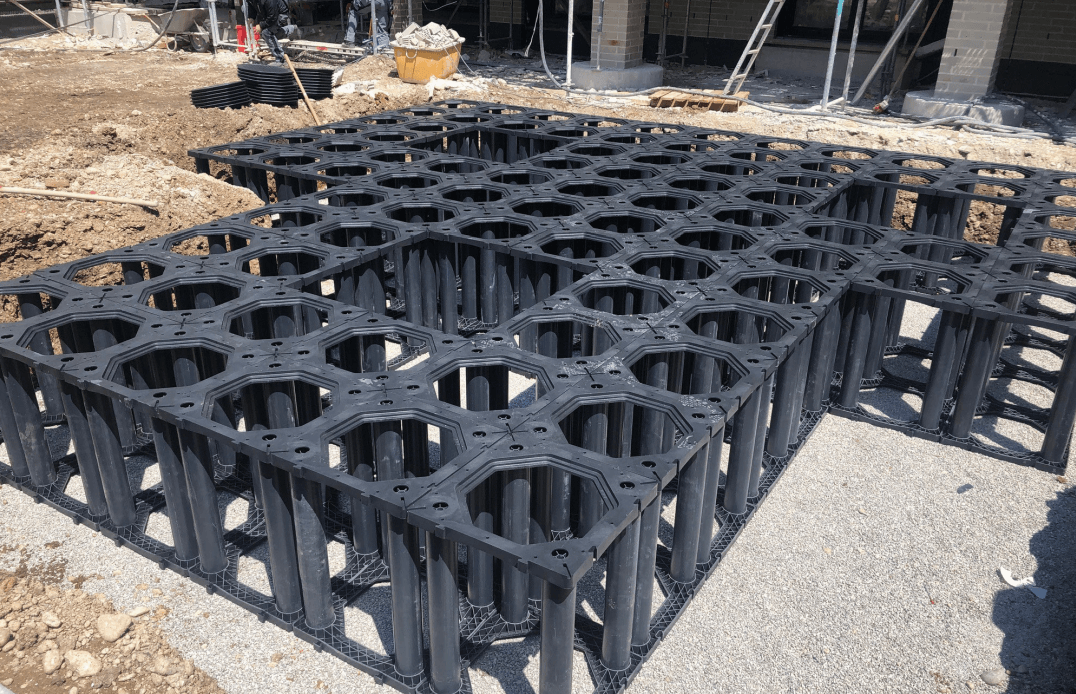
TreeParker®
Insufficient Root Space
In urban areas, trees often find limited space to root adequately and in line with their natural growth habit. This is further compounded by competition with utility infrastructure, surrounding buildings, historical underground layers, and traffic use. The tree's lifespan and development are often restricted by the available rootable volume and its quality.
Optimized Tree Locations
TreeParker® provides additional rootable space beneath sealed surfaces. The system places no restrictions on the substrate used. TreeParker® is a highly effective root management system; up to 95 percent of the system can be filled with the substrate of your choice without requiring compaction.
